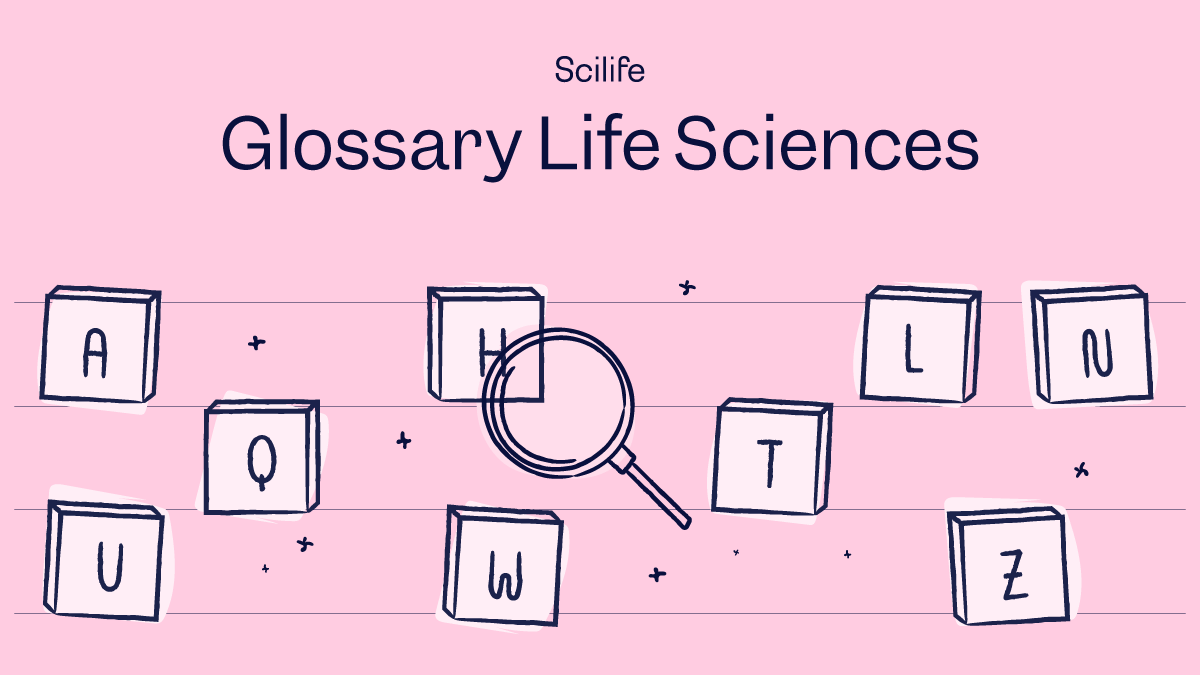
According to the EMA, Good Distribution Practices (GDP) comprise minimum standards that a wholesale distributor must meet to ensure that the right environment and handling are maintained throughout the supply chain to prevent any alteration of the medicine's quality and integrity.
By complying with GDP, stakeholders ensure that:
- Medicines in the supply chain are authorized in line with EU legislation.
- Medicines are consistently stored under appropriate conditions, including during transport.
- Cross-contamination with other products is prevented.
- Stored medicines are turned over at an appropriate rate.
- The correct products reach the intended recipient within an acceptable timeframe.
Want to know why Good Distribution Practices are important, who needs to become GDP certified, what’s the scope of Good Distribution Practices is, and who enforces the GDP?
You’ll find all the answers in our ultimate guide to the Good Distribution Practices!

Why are Good Distribution Practices important?
So, why are Good Distribution Practices important in regulated industries?
To begin with, the quality of a pharmaceutical product depends on meticulous manufacturing, proper storage, and sound distribution. A lack of proper handling and transportation can negatively affect the quality, safety, and performance of a product.
Mistakes in distribution can also result in severe delays, shortages, and even the circulation of false medicines, posing a great danger to the patients.
Another reason why GDP is important is product traceability, which can facilitate official investigations into quality issues or any incident involving pharmaceutical products.
In short, GDP ensures that all pharmaceutical and medical device products safely reach the end user in ideal condition, also protecting the reputation of wholesale distributors and companies behind them.

Who needs to become GDP certified?
Next, we’ll address who needs to become GDP certified.
According to the EMA, any company involved in the storage, movement, or delivery of medicines requires a GDP certification to ensure product quality and safety for the patients. It's a legal requirement in the EU and the UK.
Whilst it is not a direct legal requirement in the US, it is a critical industry standard and often a mandatory requirement from trading partners and for accessing certain markets, particularly in the pharmaceutical and medical device industries.
This includes pharma manufacturers, wholesale distributors, transport and logistics companies, and storage facilities.
So, who needs to become GDP certified? Here are some of the key roles in the supply chain that should ensure GDP is maintained:
- Manufacturers: Some distribute medicinal products.
- Wholesalers: Wholesalers ensure that all manufactured goods they send to individual sellers go through a compliant delivery process.
- Responsible Person (RP): A responsible person oversees all activities and ensures they meet regulatory standards.
- Distributors: They work in the field, ensuring GDP in all activities.
- QA/QC personnel: Monitor and ensure quality is maintained throughout distribution.
- Brokers: Their quality system, personnel training, and documentation must adhere to specific GDP provisions relevant to their activities, including an emergency plan for recalls and procedures for handling suspected falsified medicines
What is the scope of Good Distribution Practices?
Good Distribution Practices start from the minute the medicinal product leaves the production facility.
The EU provides detailed guidelines regarding the entire process involving all associated factors, addressing the full scope of Good Distribution Practices.

What’s the scope of Good Distribution Practices? The ten sections of GDP, according to the EU, are:
#1 Quality Management System
Quality management is an integral part of any production, ensuring medicinal products maintain their quality and integrity until they reach the end user.
A quality management system (QMS) monitors every step in the supply chain as required by the product. For example, a vaccine-delivering organization will ensure electronic temperature monitoring systems in warehouses and trucks. If a shipment of vaccines is exposed to temperatures outside the specified range, the QMS team flags it and initiates corrective and preventive actions.
#2 Employees
The quality of a delivered product cannot be preserved if the employees handling it are not properly trained. For example, when the COVID-19 pandemic hit, logistics companies working with COVID-19 vaccine distribution required all handling staff to complete certified training on cold chain logistics and product-specific handling. As these vaccines were sensitive in nature and needed to be mass-delivered worldwide, all those handling them were trained.
So, in short, a responsive person must be selected to manage and monitor all activities needed for GDP compliance, including the maintenance of the quality system, as well as the organization’s GDP training program.
The trainings need to cover product security, product identification, and detection and flagging of falsified medicines. There needs to be an initial training and regular “refresh” training.
#3 Facilities, storage and equipment
Without the right facilities, good distribution cannot be executed properly. Warehouses and equipment storing pharmaceuticals must be aseptic, temperature-pressure standardized, secure, and compliant with regulations.
For example, the distribution of COVID-19 vaccines required ultra-low temperatures. As such, organizations used specialized "freezer farms" equipped with backup power, temperature alarms, and real-time monitoring to ensure continuous Good Distribution Practice compliance. There needs to be separate storage areas for:
- Returned products
- Broken or damaged products
- Recalled products
- Dangerous products
- Suspected fake products
Premises can only be accessed by authorized personnel, and no unauthorized substances, like drinks or foods, can be brought in. Managers need to run stock inventories regularly, with stock discrepancies or irregularities documented and investigated.
#4 Documentation
Documentation is essential during pharmaceutical and medical product production and delivery. Accurate and accessible documentation is required for traceability, accountability, and regulatory compliance of all parties across distribution channels. The requirements for documentation are as follows:
- Title, nature, and purpose
- Date of approval by an authorized party
- No changes without authorization
For example, all distributors in the EU have to record all transactions involving controlled substances, including delivery receipts, storage conditions, and chain-of-custody logs. This way, if there are adverse events, a batch of the drug can be easily located and retracted without further escalation of the situation.
#5 Operations
A standard operating process saves time and improves efficiency. Setting Standard Operating Procedures (SOPs) for day-to-day processes such as receiving, storage, picking, and dispatch reduces the chances of mistakes like misdelivery or mishandling.
For example, barcoding every medication package and verifying its source and expiration date before dispatching it to customers prevents mix-ups or counterfeit medications from entering the supply chain.
#6 Complaints, returns, and product withdrawals
Drug distribution is not a one-way process. One reason all distribution data is recorded is to facilitate product withdrawals from the market or trace specific complaints.
This is especially crucial for products shipped overseas and commonly used drugs. For example, a blood pressure drug contaminated with impurities must be recalled, even after they have been shipped to multiple continents. A specific SOP for complaints and subsequent recalls will ensure accurate detection and fast reaction.
Complaints need to be divided into two categories:
- Product quality: The wholesaler needs to inform the manufacturer immediately.
- Product distribution: The wholesaler must conduct an investigation to find out what’s causing the issue detailed in the complaint.
Returns require an investigation before returning them to saleable stock that takes into consideration:
- The type of product
- Specific storage requirements
- The physical condition of the product
- Its history and the time elapsed since it was issued
For recalls, wholesalers must notify all relevant supply chain stakeholders, including manufacturers, regulators, and customers, and maintain records of the process. A final report must reconcile quantities delivered with those recovered.
Scilife Tip:
If a medicinal product is identified or suspected to be counterfeit, the distributor must immediately inform the competent authority and the marketing authorisation holder.
Distribution and sale of the product must be suspended, and the items stored separately, clearly labeled as falsified, and marked not for sale. Once confirmed as fake, the distributor is responsible for ensuring that necessary steps are taken and such products cannot re-enter the supply chain or be mixed with saleable stock.
#7 Outsourced activities management and auditing
A lot of the companies outsource specific tasks to other smaller companies.
However, it falls upon the original company to verify any GDP standards of third-party companies (e.g., warehousing, transport). This includes evaluating service providers before hiring them, qualifying and verifying their facilities, licenses, and procedures.
Some checks that need to be done when running pre-hiring assessments (and regularly after) include:
- Supplier reputation and reliability
- Product quantities offered: Are they realistic regarding the nature and availability of the product?
- Authenticity of the product
- Price ranges
When outsourcing, a detailed written contract is required, clearly defining roles and responsibilities and including GDP requirements such as temperature monitoring, staff training, deviation reporting, recall management, and regular performance audits.
Contracts should also state whether subcontracting is permitted and, if so, under what conditions.
Once hired, regular monitoring of the service providers is essential, through audits, performance reviews, documented follow-up of deviations or complaints, etc.
#8 Internal audits
Audits are an integral part of any operation, especially when it comes to GDP. Regular internal audits verify that all Good Distribution Practices are correctly followed, eliminating risks of non-compliance.
The scope of internal audits and self-inspections can vary, from comprehensive to smaller inspections focused on specific aspects of the product’s supply chain. Internal audits should be impartial and detailed, and assigned to a responsible person trained specifically for the task.
Results must be recorded and observations made during the inspection, including potential non-compliances, irregularities, and deviations, and must be gathered in a report. When necessary, the wholesaler must implement and track CAPAs.
#9 Transport
Transport facilities are the heart of Good Distribution Practice. All vehicles need to be up-to-date and have the proper technology for temperature control and security. For example, some companies use data loggers and real-time GPS monitoring to ensure timely and safe delivery.
Before dispatch, the delivery order must be verified through a documented replenishment plan. Medicines should then be packed in labeled containers indicating contents, source, and any handling or storage requirements.
Containers are loaded onto vehicles according to the delivery schedule, but the wholesaler remains responsible for the medicines’ quality, integrity, and security during transit. Any deviation must be reported immediately by the driver to both the wholesaler and the recipient.
#10 Special provisions for brokers
Brokers work with manufacturers and distributors but never handle the medicinal and pharmaceutical products themselves. However, they are also subjected to regulatory requirements.
They need to be registered with the competent authority in the country where they operate and maintain a documented quality system.
A broker verifies that involved parties (suppliers, customers, and transporters) are GDP-compliant and ensures that transport is managed by a certified distributor.
They must also keep records of all transactions for a minimum of five years, to ensure traceability. Lastly, they must also ensure that written agreements are in place between all parties to define responsibilities under the GDP.
Who enforces the GDP?
Lastly, we will tell you who enforces the GDP, meaning what regulatory bodies are behind the guideline:
GDP in the US:
In the US, GDP is not formally codified like in the EU. Instead, the FDA enforces Current Good Manufacturing Practices (cGMP) under 21 CFR Parts 210–211 and the Drug Supply Chain Security Act (DSCSA), which cover product quality, traceability, and secure distribution.
GDP in the EU:
In the EU, GDP is enforced by national competent authorities of each member state. The European Medicines Agency (EMA) coordinates and harmonizes standards, but inspections and GDP certifications are carried out by each country’s authorities (like Germany’s BfArM, or Spain’s AEMPS). Companies must hold a Wholesale Distribution Authorisation (WDA) and comply with GDP guidelines. After an inspection, the competent authority issues the GDP certificate, usually within 90 days if the site is compliant.
GDP in the UK:
In the UK, GDP is overseen by the Medicines and Healthcare products Regulatory Agency (MHRA). Unlike the EU process, the MHRA only issues a GDP certificate after the inspector has reviewed and accepted the distributor’s response to the post-inspection letter.
Note: Ever since Brexit, the MHRA is no longer an EU authority. It now operates independently, regulating GDP in the UK only.
Good Distribution Practices for pharmaceutical products vs medical devices
GDP for medical devices and pharmaceutical products shares a common goal: to preserve the safety and efficacy of the product while delivering. However, the exact regulations differ slightly.
The EU GDP Guidelines for medicines are clearly defined in Guidelines 2013/C 343/01 (human medicines), while for medical devices, the relevant regulations are the EU MDR (Medical Device Regulation) and the IVDR (In Vitro Diagnostic Regulation), which do not have a dedicated section for distribution practices.
While pharmaceutical GDP focuses more on environmental controls to ensure no chemical change to the product, medical device GDP focuses more on retaining the device's physical design, technical specifications, performance, and intended use. GDP for both is similar in terms of QA and documentation.
Ultimate guide to the Good Distribution Practices: Final thoughts
We hope that you have found our ultimate guide to the Good Distribution Practices helpful and insightful!
To summarize, at its core, GDP is all about protecting patients, as well as safeguarding business continuity, reducing the risks of product recalls, regulatory penalties, and reputational damage. With the right training, oversight, and a quality management system, GDP compliance becomes an enabler to safe, efficient, and trusted supply chains.
If you’re on the lookout for a great eQMS to navigate GDP compliance, take a look at our Scilife GDP use case. You will discover how we have helped companies like yours achieve seamless compliance, turning complex regulations into actionables and ensuring that revolutionary products get delivered timely and successfully, every time.
FAQ
How is GDP different from cold chain shipping?
Cold chain shipping focuses specifically on temperature control. GDP, however, encompasses a wider set of quality measures, including documentation, risk management, and secure distribution channels, all under regulatory supervision.
Can GDP procedures be applied to clinical trial materials?
Yes. The GDP framework can be adaptable to clinical trial samples and investigational medicines. While GDP is formally designed for commercial medicinal products, regulators and inspectors expect companies to apply equivalent GDP standards to Investigational Medicinal Products (IMPs).
Does GMP also cover GDP?
GMP and GDP
both safeguard quality, but at different stages of the supply chain. GMP ensures medicines are manufactured, tested, packaged, labeled, and released correctly, while GDP ensures they are stored, transported, and delivered properly until they reach the patient.
Are transport hubs covered by GDP in Europe?
According to the European GDP Association, hubs are used at times to store products for between 24 and 72 hours max, which is the current industry practice. According to Chapter 9 of EU GDP, the duration of temporary storage during transportation should be minimized as much as possible, and should be specified in SOPs based on risk assessment. Therefore, Hubs will not have a GDP certificate but still need to comply with EU GDP.










